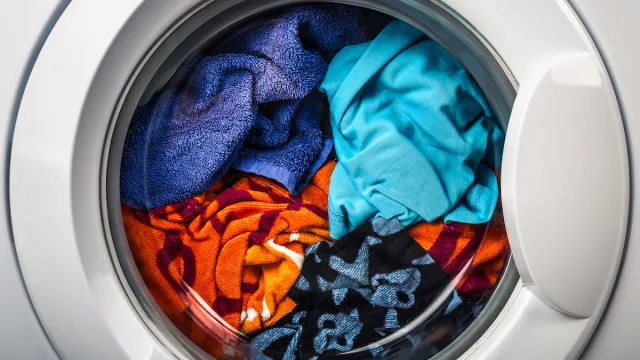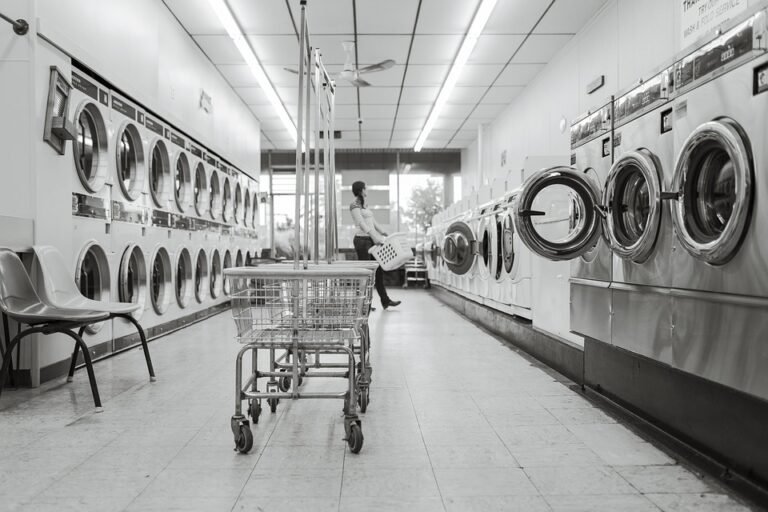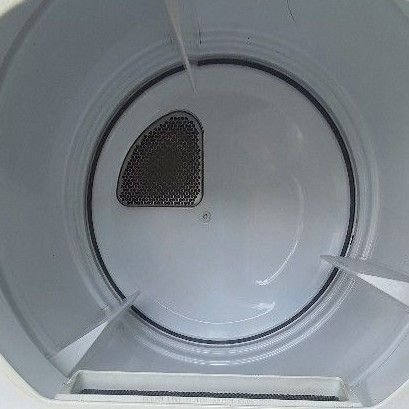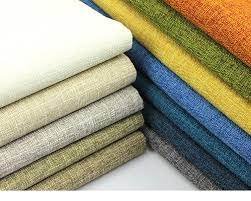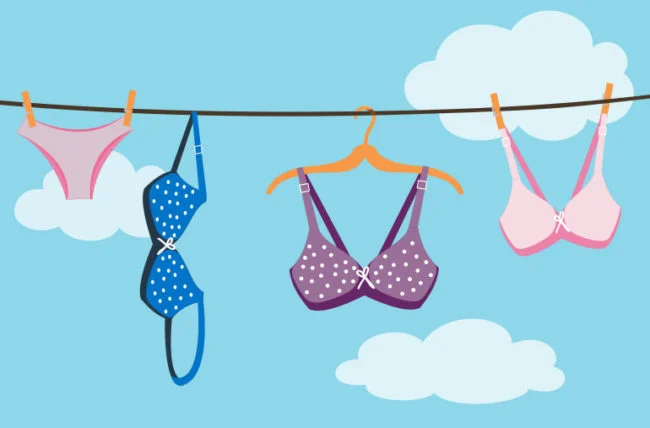Can You Mix Colors In The Dryer? Exploring The Dos And Don’ts
In the fast-paced world of laundry, we often find ourselves juggling loads of clothes with varying colors, fabrics, and care instructions. While drying clothes It’s not uncommon to wonder whether can you mix colors in the dryer without risking that vibrant red shirt turning your whites into a delightful shade of pink. This article delves into the art of laundry mixing, exploring the dos and don’ts of combining colors in the dryer for optimal results.
can you mix colors in the dryer?
Yes, Mixing colors in the dryer is a common practice, but there are some important considerations to keep in mind to ensure your clothes remain vibrant and free from color transfer.
- Sorting Clothes: Before you start, it’s crucial to sort your laundry. Separate your clothes into three main categories: whites, darks, and colors. This prevents color bleeding, which can occur when dyes from one garment transfer onto another.
- Temperature Settings: Pay attention to the recommended temperature settings on your clothing labels. Most modern dryers offer various heat settings. Using the appropriate temperature for the fabric type can help prevent color fading and damage.
- Color Catchers: Consider using color catchers, which are laundry sheets designed to absorb loose dyes. These can be especially useful when mixing colors in the dryer, as they help prevent color transfer.
- Delicate Items: For delicate or new clothing items, it’s best to err on the side of caution. Dry them separately or with similar items to prevent damage or color bleeding.
- Lint Maintenance: Regularly clean the lint filter in your dryer to ensure proper airflow. A clogged lint filter can lead to longer drying times and less efficient drying.
- Preventing Stains: Address any stains or spills on your clothing before putting them in the dryer. Heat can set stains, making them more challenging to remove later.
- Overloading: Avoid overloading your dryer, as this can lead to uneven drying and increased wear and tear on your clothes. Clothes need space to move around for effective drying.
- Regular Maintenance: Keep your dryer in good working condition by performing routine maintenance, such as checking for loose buttons or sharp objects in pockets that could damage other garments.
In summary, you can mix colors in the dryer, but it’s essential to sort your laundry, follow temperature recommendations, use color catchers when needed, and take special care with delicate items. By following these guidelines, you can enjoy the convenience of drying different colored clothes together while preserving their quality.
Can You Dry Whites and Colors Together?
Drying whites and colors together is possible if you take precautions. Use cold water, a color-safe detergent, and color catchers to minimize the risk of color transfer.
Can You Dry Different Colors Together?
Yes, you can dry different colors together, but it’s essential to sort them by color intensity. Light colors can generally be dried together, while darks should be separated to prevent color bleeding.
Can You Dry Lights and Darks Together?
You can dry lights and darks together if you use cold water and a color-safe detergent. However, be cautious with brand-new dark items, as they are more likely to bleed.
What are the essentials of laundry mixing?
Laundry day can be a chore, but with the right knowledge, it becomes less daunting. One common concern is whether it’s safe to mix colors in the dryer. Let’s break down the essentials of laundry mixing.
Sorting Your Laundry
The foundation of successful laundry mixing begins with sorting your clothes. Use separate laundry baskets for whites, darks, and colors. This step prevents color bleeding and preserves the vibrancy of your clothes.
What are the Fabric Types?
Different fabrics have different care requirements. Group similar fabrics together to ensure even drying. For instance, avoid drying delicate silk garments with heavy denim jeans.
Let’s delve into the various fabric types commonly found in our wardrobes and understand how to best care for them:
- Cotton: Cotton is one of the most common fabrics used in clothing due to its comfort and breathability. It’s relatively easy to care for, as it can withstand both machine washing and drying. However, be cautious with high heat settings, as they can cause shrinkage.
- Polyester: Polyester is a synthetic fabric known for its durability and wrinkle resistance. It can be machine washed and dried on low to medium heat. Be cautious with high heat, as it may melt or become damaged.
- Wool: Wool is a natural fiber known for its warmth. It’s a bit more delicate and should be hand-washed or machine washed on a gentle cycle in cold water. Avoid wringing or twisting wool garments, as this can lead to stretching. Lay them flat to dry.
- Silk: Silk is a luxurious, delicate fabric. Hand wash silk garments in cold water using a mild detergent, and avoid wringing or twisting. Instead, gently press out excess water and lay them flat to dry. Iron on a low heat setting if necessary.
- Linen: Linen is a breathable, lightweight fabric ideal for warm weather. It wrinkles easily, so it’s best to iron while slightly damp. Machine wash linen in cold water on a gentle cycle, and tumble dry on low or hang to dry.
- Denim: Denim is a rugged, durable fabric often used for jeans. It can handle machine washing and drying but may fade over time. Turn denim inside out to preserve the color, and avoid high heat settings.
- Rayon: Rayon is a semi-synthetic fabric with a silky feel. It’s prone to shrinking, so hand wash it in cold water or use a gentle cycle with low heat. Hang or lay flat to dry.
- Nylon: Nylon is a synthetic fabric known for its stretch and durability. Machine wash nylon items in cold water on a gentle cycle, and avoid high heat when drying. Check does nylon shrink in the dryer guide post.
- Spandex: Spandex, often blended with other fabrics, is highly elastic. Follow the care instructions of the primary fabric, as spandex itself is generally durable and can handle machine washing and drying. Read does spandex shrink in the dryer guide.
- Velvet: Velvet is a luxurious fabric with a soft pile. Dry clean velvet items to preserve their texture and avoid crushing the pile.
Temperature Matters
Selecting the appropriate drying temperature is crucial. Low heat is suitable for delicate items, while high heat can be used for sturdier fabrics. Always check care labels for temperature recommendations.
Detergent and Fabric Softeners
Choose a detergent that’s compatible with both colors and fabrics. Liquid detergents are less likely to leave residue on your clothes. Fabric softeners can enhance the feel of your clothes but use them sparingly.
The Art of Color Catchers
Color catchers are a lifesaver when it comes to mixing colors in the dryer. These sheets absorb loose dyes, preventing them from transferring onto other clothes.
Dryer Settings and Precautions
Most dryers offer a variety of settings. Opt for a shorter drying time to prevent over-drying and excessive wear on fabrics. Clean the lint filter after each use to maintain dryer efficiency.
The White Towel Test
Periodically, toss a white towel into your mixed load. If it comes out with unexpected colors, you may need to adjust your laundry practices.
Special Care for Delicates
Delicate items like lace or silk should be placed in mesh laundry bags before mixing them with other clothes. This extra layer of protection keeps them safe.
Handling Stains
Address stains before tossing clothes in the dryer. Heat can set stains, making them more challenging to remove later.
Avoiding Color Bleeding
To avoid color bleeding, especially with new or vibrant clothing items, consider washing them separately for the first few cycles.

what are the Tips for Energy Efficiency?
To save energy, avoid overloading your dryer. This allows for better air circulation and shorter drying times, reducing your carbon footprint.
When to Seek Professional Help?
If you encounter persistent laundry problems despite following best practices, consult a professional laundry service for guidance.
Conclusion
Can you mix colors in the dryer? Mixing colors in the dryer can be a convenient and time-saving approach if done correctly. By following the guidelines outlined here and considering the specific questions regarding laundry mixing, you can ensure your laundry day is efficient and your clothes stay vibrant.
FAQ about can you mix colors in the dryer
1. Can you dry whites and colors together in the dryer?
Drying whites and colors together is possible with precautions. Use cold water, a color-safe detergent, and color catchers to minimize color transfer.
2. Is it safe to dry different colors together in the dryer?
Yes, you can dry different colors together, but sort them by color intensity. Light colors can be dried together, while darks should be separated to prevent color bleeding.
3. Can lights and darks be dried together in the dryer?
You can dry lights and darks together if you use cold water and a color-safe detergent. Be cautious with brand-new dark items, as they are more likely to bleed.
Remember, the key to successful laundry mixing is knowledge and care. With these guidelines, you can enjoy efficient laundry days without sacrificing the quality of your clothes.

